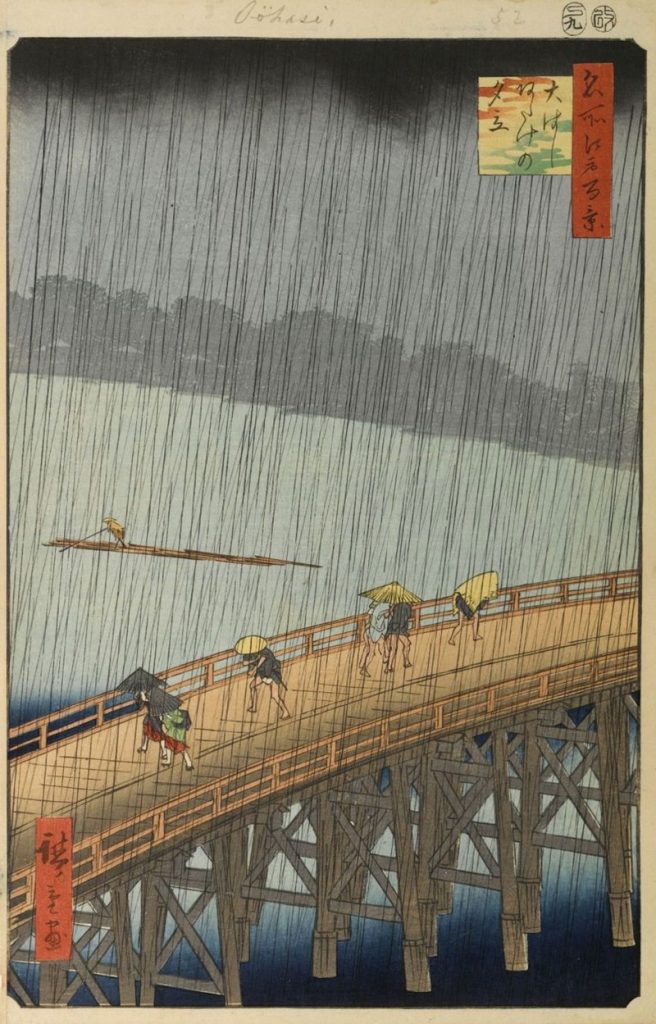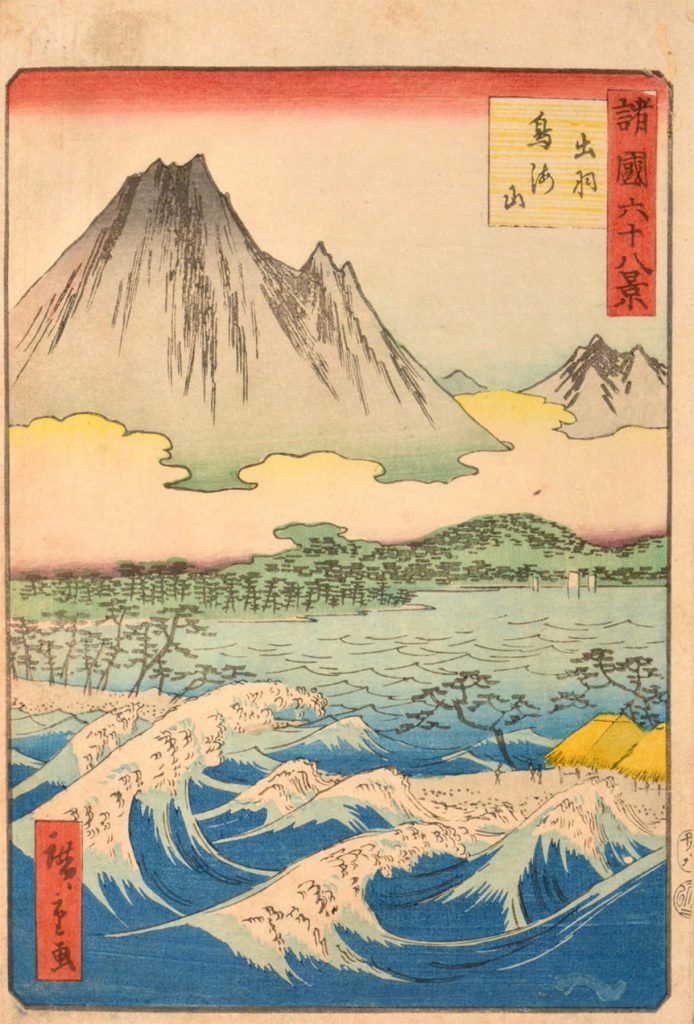Introduction
Ukiyo-e, the captivating world of Japanese woodblock prints, has left an indelible mark on the realm of art and culture. Its vivid imagery, meticulous craftsmanship, and timeless allure have garnered global admiration. In this exploration, we’ll unveil the eleven most influential ukiyo-e artists, whose works continue to inspire and shape the art landscape.
A Glimpse into Ukiyo-e Art
History and Influence of Ukiyo-e Art
Ukiyo-e, meaning “pictures of the floating world,” emerged in Japan during the Edo period (17th to 19th centuries). It was a time of peace and prosperity, and the urban population sought leisure and entertainment. Ukiyo-e prints depicted scenes from this ephemeral world, capturing the essence of everyday life, kabuki theater, beautiful landscapes, and iconic Mount Fuji.
Moreover, ukiyo-e artists played a pivotal role in shaping Japanese culture and art. They introduced innovative printing techniques, including multi-color woodblocks, which revolutionized mass production. Most importantly, these prints not only served as popular entertainment but also influenced fashion, theater, and even Western art movements like Impressionism.
The Ten Influential Ukiyo-e Artists
1. Katsushika Hokusai (1760-1849): The Master of Mount Fuji
Katsushika Hokusai, known for his iconic “Thirty-Six Views of Mount Fuji,” immortalized the majestic peak in ukiyo-e. His unmatched talent in capturing the essence of landscapes and nature remains a cornerstone of ukiyo-e art.
Notable Work: “The Great Wave off Kanagawa”

Hokusai’s woodblock prints often command the highest prices at auction.
His iconic ‘Thirty-six Views of Mount Fuji,’ a collection of 46 exquisite woodblock prints from Japan’s Edo period, sold for $3.559 million at a Christie’s auction in New York.
In a historic auction held at Christie’s in New York on March 19, 2023, a rare print of Katsushika Hokusai’s iconic “The Great Wave off Kanagawa” shattered records fetching $2.76 million.
2. Utagawa Hiroshige (1797-1858): The Poet of Landscapes
Utagawa Hiroshige’s “The Fifty-three Stations of the Tōkaidō” series showcased his mastery of landscapes. His evocative prints, often depicting travelers in various seasons, are celebrated for their atmospheric beauty. In addition, Utagawa Hiroshige was originally known as Ando Hiroshige.
Notable Work: “Sudden Shower over Shin-Ohasi Bridge”

Did You Know Freddie Mercury was a Japanese Art Collector? When a rare version of “Sudden Shower over Shin Ohasi Bridge” was presented at Sotheby’s auction in London, it was estimated to fetch up to £50,000. However, the piece exceeded all expectations by selling for an astonishing £292,100, a testament to its exceptional condition and rich historical significance.
3. Kitagawa Utamaro (1753-1806): The Portrait Virtuoso
Kitagawa Utamaro is renowned for his portrayal of women: bijin ōkubi-e (“large-headed pictures of beautiful women”) portraits. His “Three Beauties of Yoshiwara (Seiro san bijin)” is a testament to his ability to capture the elegance and charm of female subjects.
Notable Work: “Deeply Hidden Love” (Fukaku shinobu koi)” which fetched a record 745,000 EUR at auction in 2016.

4. Katsukawa Shunshō: Kabuki’s Visual Maestro
Katsukawa Shunshō was instrumental in popularizing kabuki theater through ukiyo-e. His dynamic portraits of kabuki actors and sumo wrestlers brought these performers to life.
In fact, the great ukiyo-e master Hokusai was one of Shunshō’s pupils from the Katsukawa School–which yielded an outsized influence on the world of ukiyo-e.
Notable Work: “Heroes with Long Swords – Kabuki”

5. Tōshūsai Sharaku (active 1794-1795): The Enigmatic Engraver
Tōshūsai Sharaku’s works are characterized by their bold and dramatic expressions. Though his career was short-lived, his prints featuring kabuki actors are iconic.
Moreover, mystery surrounds Sharaku–neither his birth or death year’s are known. What we do know is that in the 10 month period between 1794 and 1795, he was prolific, creating more than a 150 designs.
Finally, Sharaku’s work primarily focused on the depiction of Kabuki actors, initially with a single actor portrait, and later of two performing actors.
Notable Work: “Kabuki – Otani Oniji”

6. Hasui Kawase (1883 – 1957): Modernizing Ukiyo-e
Kawase Hasui was a pivotal figure in the 20th-century revival of ukiyo-e. His landscapes, infused with a modern sensibility, bridged the gap between traditional and contemporary art.
Further, Hasui’s exemplary work is characterized by tranquil moods and detailed, realistic compositions. Many of his pieces incorporate scenes with snow, or set in the night time with a view of the moon.
Notable Work: “Mt. Fuji after Snow (Tagonoura)”
Read more about the Ethereal World of Kawase Hasui.

7. Suzuki Harunobu (1725 – 1770): Pioneer of Color Printing
Suzuki Harunobu is credited with the development of full-color printing in ukiyo-e known as nishiki-e. In this process he utilized multiple separate wood blocks in the creation of a single image. Furthermore, this technique allowed him to consistently produce images with more than three colors (up to even ten) which was the norm at the time.
Finally, Harunobu’s works are celebrated for their delicacy and charm. He was one of the foremost producers of the bijin-ga (pictures of beautiful women) along with actors of Edo.
Notable Work: “Young Man Playing Flute”

8. Utagawa Hiroshige II (1826-1869) Continuing the Legacy
Utagawa Hiroshige II, the adopted son of Andō Hiroshige, upheld his father’s legacy, producing prints that paid homage to his father’s iconic landscapes. He continued producing new works in the same style by publishing more “Famous View of” series including “One Hundred Views of Famous Places in Various Provinces (1859-1861)” and
“Forty-Eight Views of Famous Places of Edo (1860-1865)“
Notable Work: “Mt. Chokai, Dewa Province”

9. Torii Kiyonaga (1752 – 1815): Capturing the Courtesans
Torii Kiyonaga’s prints often featured courtesans of the Yoshiwara district. His elegant compositions and intricate details showcased the beauty of these women ( bijin-ga).
Notable Work: “Sixth month, from the series Twelve months of the southern quarter”

10. Hiroshi Yoshida (1876-1950): A Fusion of East and West
Hiroshi Yoshida, a modern ukiyo-e artist, bridged the gap between traditional Japanese woodblock printing and Western artistic influences. Born in Tokyo, Yoshida was exposed to both worlds from a young age. His early works primarily focused on traditional subjects, but he later explored Western painting styles during his travels in Europe.
Yoshida’s unique contribution to ukiyo-e lies in his meticulous attention to detail and his use of a wide color palette. Moreover, his prints often depicted landscapes, scenes from his travels, and serene portraits of women. His dedication to perfecting the woodblock printing process, along with his willingness to experiment with new techniques, breathed new life into ukiyo-e during the 20th century. And finally, he is known for pioneering the shin-hanga (“new prints”) movement.
Notable Work: “Shalimar Garden in Lahore”

11. Ogata Gekkō (1859-1920): Master of Bijin-ga and Nature
Ogata Gekkō, a prominent figure in the late ukiyo-e period, was celebrated for his exquisite bijin-ga (beautiful women) prints and masterful depictions of nature. He was a versatile artist who seamlessly blended traditional ukiyo-e elements with contemporary influences.
Furthermore, Gekkō’s bijin-ga prints exuded elegance and grace, often featuring women in elaborate kimono against intricate backdrops. His keen eye for detail and use of delicate color palettes set his work apart. Additionally, Gekkō’s nature prints, including his “One Hundred Views of Mount Fuji,” captured the sublime beauty of Japan’s landscapes.
Notable Work: “Ryūshōten (Dragon Rising up to Heaven)”

Conclusion
These influential ukiyo-e artists, each with their unique style and contributions, continue to shape the world of art and inspire generations of artists and enthusiasts. Their legacy lives on in the enduring appeal of ukiyo-e woodblock prints and the appreciation of Japan’s rich artistic heritage.
Are you looking to start collecting ukiyo-e art? Be sure to read our comprehensive guide: Collecting Ukiyo-e Art: A Guide for Beginners.
Read more:
- What is Ukiyo-e? A Dive into Japanese Woodblock Prints
- Mori Yuzan and Hamonshu: Japanese Wave Designs
- Where Can I Buy Ukiyo-e Art? Here’s where to find those rare prints
- Kuniyoshi Utagawa: A Master of Ukiyo-e and Musha-e
- Evolution of Japanese Woodblock Art: Ukiyo-e, Shin-Hanga, and Sosaku-Hanga

At the Art of Zen we have a wide selection of original Japanese art prints in the ukiyo-e and Japandi style . Add some zen to your space with Mount Fuji wall art from the Art of Zen shop.




0 Comments